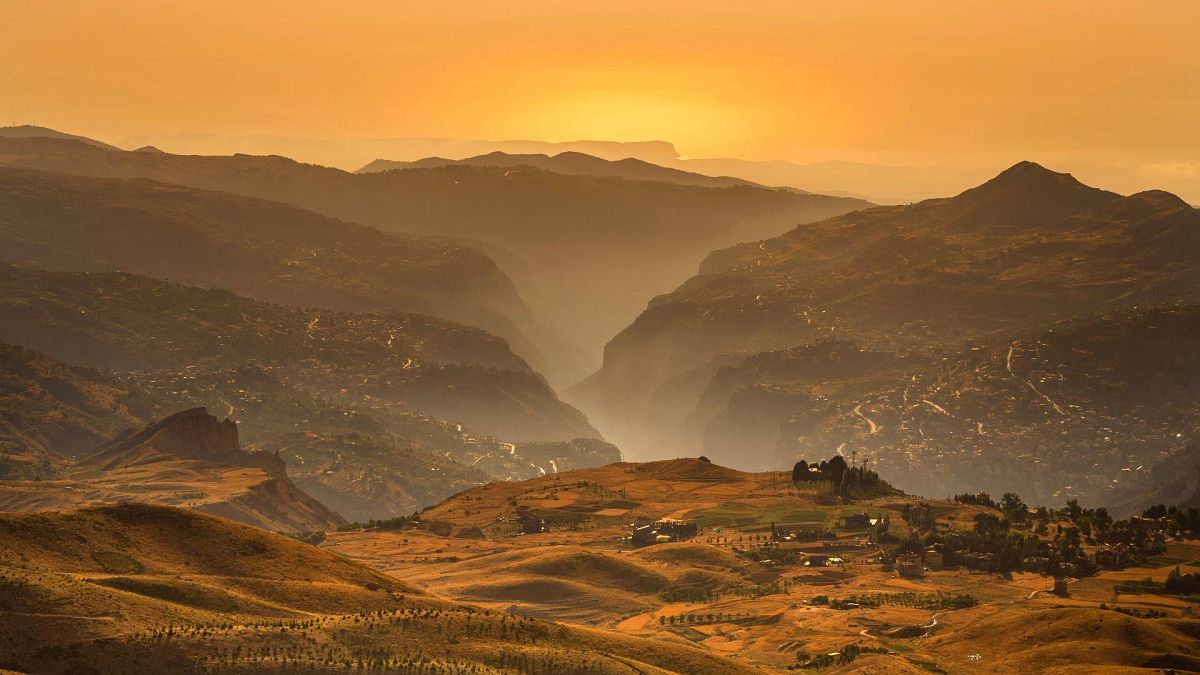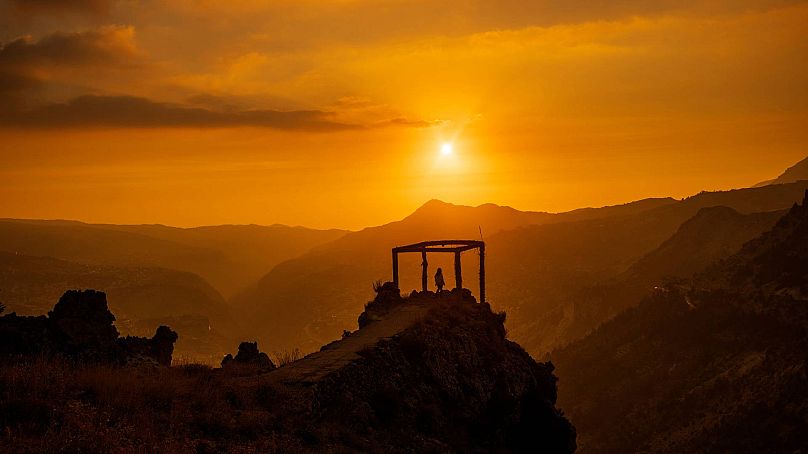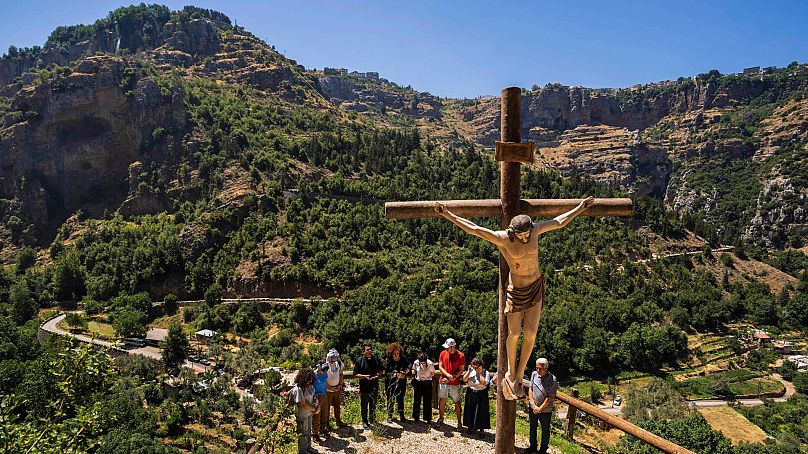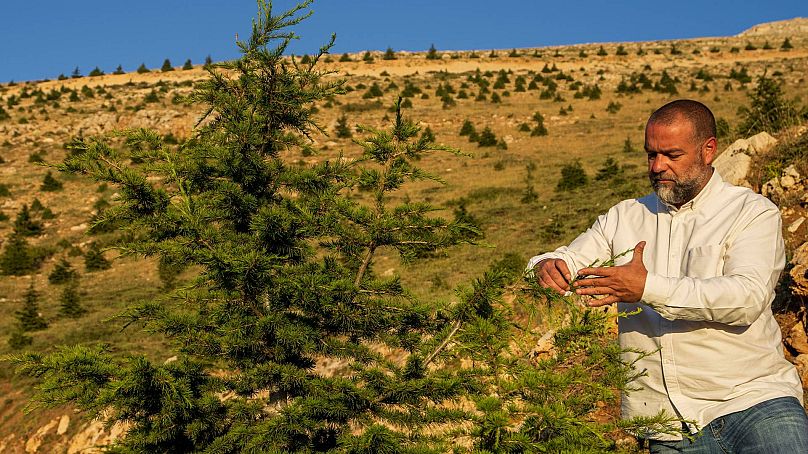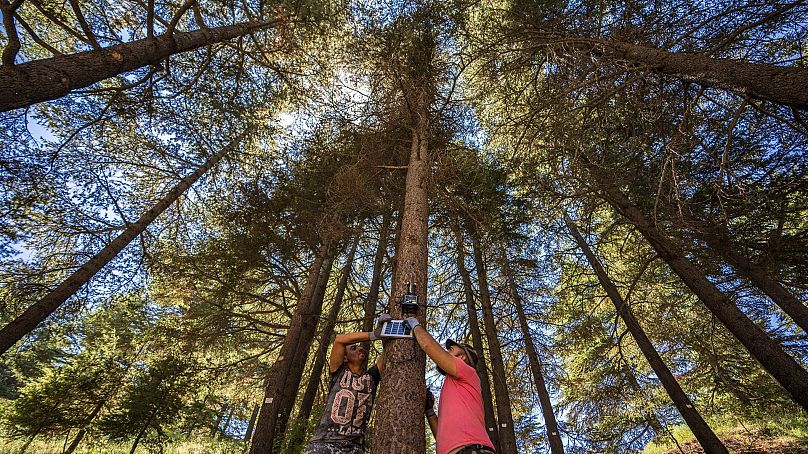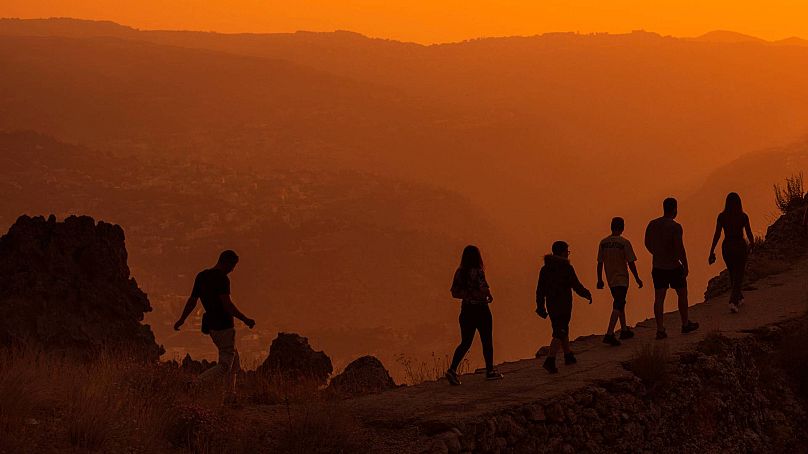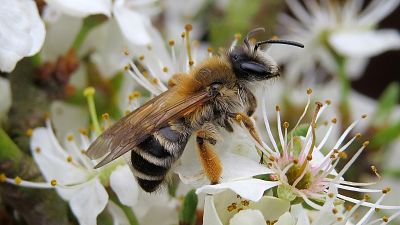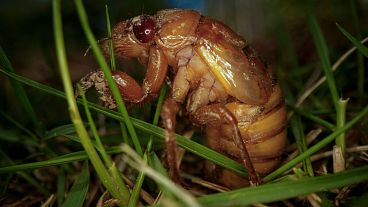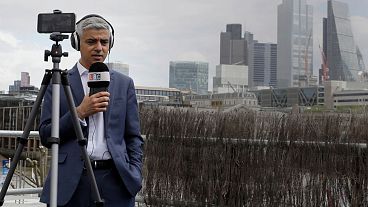Cedar trees are a symbol of Lebanon but they’re disappearing as the country heats up.
For Lebanon’s Christians, cedar trees are sacred. These tough evergreens that survive the mountain’s harsh snowy winters are mentioned 103 times in the Bible. The trees are a symbol of Lebanon, pictured at the centre of the national flag.
The iconic trees in the country's north are far from the clashes between Hezbollah militants and Israeli troops along the Lebanon-Israel border in recent weeks against the backdrop of the Israel-Hamas war.
The Lebanese government says Israel's use of white phosphorus and other incendiary weapons has burned tens of thousands of olive trees and other crops in the border area, and impoverished Lebanese farmers fear the shells have contaminated their soil.
But the long-term survival of the cedar forests is in doubt for another reason. Rising temperatures due to climate change threaten to wipe out biodiversity and scar one of the country’s most iconic heritage sites for its Christians.
Why are Lebanon's cedar forests considered sacred?
The lush Cedars of God Forest, some 2,000 metres above sea level near the northern town of Bcharre, is part of a landscape cherished by Christians.
The preserve overlooks the Kadisha Valley - Aramaic for 'sacred' - where many Christians took refuge from persecution over Lebanon’s tumultuous history. One of the world’s largest collections of monasteries remains hidden among the thick trees, caves and rocky outcroppings along the deep, 35-kilometre valley.
The United Nations’ culture agency UNESCO in 1998 listed both the cedar forest and the valley as World Heritage Sites. They’ve become popular destinations for hikers and environmentalists from around the world. A growing number of Lebanese of all faiths visit as well, seeking fresh air away from the cities.
“People from all religions visit here, not just Christians… even Muslims and atheists,” says Hani Tawk, a Maronite Christian priest, as he shows a crowd of tourists around the Saint Elisha monastery. “But we as Christians, this reminds us of all the saints who lived here, and we come to experience being in this sacred dimension.”
Lebanon's cedar forests are threatened by climate change
Environmentalists and residents say the effects of climate change, exacerbated by government mismanagement, pose a threat to the ecosystem of the valley and the cedar forest.
“Thirty or 40 years from now, it’s quite possible to see the Kadisha Valley’s biodiversity, which is one of the richest worldwide, become much poorer,” says Charbel Tawk, an environmental engineer and activist in Bcharre - unrelated to Hani Tawk.
Lebanon for years has felt the heat of climate change, with farmers decrying lack of rain, and forest fires wreaking havoc on pine forests north of the country, similar to blazes that scorched forests in neighbouring Syria and nearby Greece. Residents across much of the country, struggling with rampant electricity cuts, could barely handle the summer’s soaring heat.
Temperatures have been above 30 degrees Celsius in Bcharre, not uncommon along Lebanon’s coastal cities but unusual for the mountainous northern town.
Nuns in the medieval Qannoubin Monastery, perched on the side of a hill in the Kadisha Valley, fanned themselves and drank water in the shade of the monastery’s courtyard. They reminisced about when they could sleep comfortably on summer nights without needing much electricity.
Already, there are worrying signs of the impact on the cedars and Kadisha.
High temperatures are disrupting the Kadisha Valley’s delicate ecosystem
Warmer temperatures have brought larger colonies of aphids that feed on the bark of cedar trees and leave a secretion that can cause mould, Charbel Tawk says. Bees normally remove the secretion, but they have become less active. Aphids and other pests also are lasting longer in the season and reach higher altitudes because of warmer weather.
Such pests threaten to stunt or damage cedar growth.
Tawk worries that if temperatures continue to change like this, cedars at lower altitudes might not be able to survive. Fires are becoming more of a potential danger.
Cedar trees usually grow at an altitude from 700 up to 1,800 metres above sea level. Tawk’s organisation has planted some 200,000 cedars over the years at higher altitudes and in areas where they were not present. Some 180,000 survived.
“Is it climate change or whatever it is happening in nature that these cedars are able to survive at 2,100 to 2,400 metres?” Tawk asks, while checking on a grove of cedars on a remote hilltop.
Local priests and environmental activists have urged Lebanon's government to work with universities to do a wide-ranging study on temperature changes and the impact on biodiversity.
Lebanon’s Maronite Church takes on the task of forest stewardship
But Lebanon has been in the throes of a crippling economic crisis for years. State coffers are dried up, and many of the country’s top experts are rapidly seeking work opportunities abroad.
“There is nothing today called the state… The relevant ministries, even with the best intentions, don’t have the financial capabilities anymore,” says Bcharre Mayor Freddy Keyrouz. He says he and mayors of nearby towns have asked residents to help with conservation initiatives and Lebanese diaspora abroad to help with funding.
The Maronite Church has strict rules to protect the Cedars of God forest, including keeping development out of it. Kiosks, tourist shops and a large parking lot have been set far away from the forest.
“We don’t allow anything that is combustible to be brought into the sacred forest,” says Charbel Makhlouf, a priest at Bcharre’s Saint Saba Cathedral.
The Friends of the Cedar Forest Committee, to which Tawk belongs, has been looking after the cedar trees for almost three decades, with the church’s support. It has installed sensors on cedar trees to measure temperature, wind and humidity, watching for worsening conditions that could risk forest fires.
Heritage site regulations have hurt the Kadisha Valley
Below the forest in the Kadisha Valley, Tawk points to other concerns.
In particular, the spread of cypress trees threatens to crowd out other species, “breaking this equilibrium that we had in the valley,” he says.
“We’ve seen them increase and tower over other species, whether it’s taking sunlight, wind or expanding their roots,” he says. "It will impact other plants, birds, insects and all the reptile species down there.”
Steps to protect the valley have actually hurt its biodiversity by removing human practices that had been beneficial, Tawk says.
In the past, herders grazing their goats and other livestock in the valley helped prevent the spread of invasive species. Their grazing also reduced fire hazards, as did local families collecting deadwood to burn in the winter.
But residents left the valley when it became a heritage site and the Lebanese government implemented strict regulations. Few live there now other than a handful of priests and nuns.
“Trees have overtaken places where people lived and farmed,” Tawk says. “Now a fire could move from one end of the valley to the other.”
Sitting in a cave near the Qannoubine Monastery, Father Hani Tawk listens to the variety of birds chirping in the valley. He says he believes in the community’s faith and awareness of nature, engrained since their ancestors took refuge here.
“When you violate that tree, you’re intruding on a long history, and possibly the future of your children,” he says.
